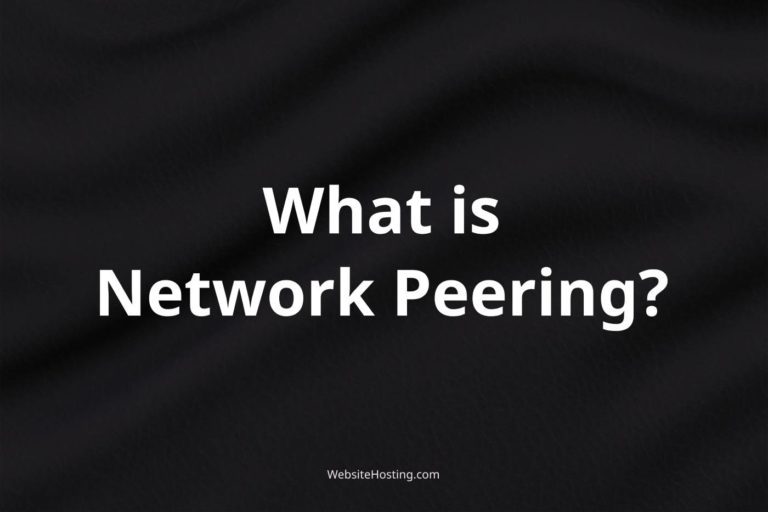NGINX is a popular web server and reverse proxy server that is known for its speed and efficiency. It is widely used by web developers and system administrators around the world, and it has become an essential tool for many websites and applications.
In this article, we will discuss what NGINX is, how it works, and why it is a valuable tool for web hosting.
What is NGINX?
NGINX is a high-performance, open-source web server software that was first released in 2004. It was created by Igor Sysoev and is now maintained by NGINX, Inc. The software is designed to handle a large number of concurrent connections and can be used as a reverse proxy, load balancer, or HTTP cache.
Some Fascinating Facts and Stats about NGINX
- NGINX was originally developed as a solution to the C10K problem, which refers to the difficulty in handling 10,000 concurrent connections on a single server.
- NGINX is pronounced “engine X.”
- NGINX is used by some of the largest websites in the world, including Netflix, Airbnb, and Pinterest.
- NGINX was initially released in 2004 and has since become one of the most popular web servers in use today.
- NGINX is also commonly used as a load balancer for TCP and UDP traffic in addition to HTTP traffic.
- NGINX powers over 40% of the top 10,000 websites by traffic volume.
- NGINX has over 450 million active sites worldwide.
- NGINX processes over 20% of the world’s busiest sites, making it the second most popular web server behind Apache.
- NGINX’s open-source software has been downloaded over 200 million times.
- NGINX has been adopted by over 67% of Fortune 100 companies.
How does NGINX work?
NGINX is built on an event-driven, asynchronous architecture that allows it to handle a large number of concurrent connections without using up excessive system resources. It can also be configured to cache frequently requested content in order to improve website performance and reduce server load.
Why use NGINX for web hosting?
There are several reasons why NGINX is a valuable tool for web hosting, including its speed, scalability, and flexibility. NGINX is able to handle a large number of concurrent connections, which makes it an ideal choice for high-traffic websites and applications. It can also be used as a reverse proxy or load balancer, which can improve website performance and reliability.
NGINX can also be used to serve static content directly from disk, which can reduce server load and improve website performance. Additionally, NGINX is highly customizable and can be configured to meet the specific needs of individual websites and applications.
NGINX has become a popular choice for web hosting, and it is widely used by companies such as Airbnb, Netflix, and Uber. It is also available for a variety of platforms, including Linux, macOS, and Windows.
Overall, NGINX is a powerful web server and reverse proxy that can provide significant benefits for web hosting. Its speed, scalability, and flexibility make it an ideal choice for high-traffic websites and applications, and its ability to serve static content directly from disk can improve website performance and reduce server load.
Related terms:
- Reverse Proxy – A server that sits between client devices and a web server to handle client requests on behalf of the server.
- Load Balancer – A device or software that distributes incoming network traffic across multiple servers to optimize resource utilization and increase reliability and efficiency.
- Caching – The process of storing frequently accessed data in a cache to improve system performance and reduce network congestion.
- SSL/TLS – Secure Sockets Layer/Transport Layer Security, a protocol used to encrypt data sent over the internet to ensure privacy and security.
- Web Server – A program that delivers web content to client devices over the internet using the HTTP protocol.
- FastCGI – A protocol used to improve the performance of web applications by reducing overhead associated with executing scripts.
- API Gateway – A server that acts as a front-end to a collection of microservices to simplify API management and enable cross-service communication.
- Application Server – A server that hosts and manages web applications to provide business logic and backend services to client devices.
- HTTP/2 – A protocol designed to improve the performance of the HTTP protocol by introducing features such as multiplexing, stream prioritization, and server push.
- Content Delivery Network (CDN) – A distributed network of servers that delivers web content to clients based on their geographic location to improve performance and reduce latency.
Related brands:
- NGINX (official website: https://www.nginx.com)
- F5 Networks (official website: https://www.f5.com)
- Apache (official website: https://httpd.apache.org)
- Microsoft IIS (official website: https://www.iis.net)
- HAProxy (official website: https://www.haproxy.org)
Popular questions:
- What is NGINX used for?
NGINX is a web server that is commonly used as a reverse proxy, load balancer, and HTTP cache to improve the performance and reliability of web applications. - How does NGINX work?
NGINX works by receiving requests from client devices and forwarding them to backend servers. It can handle multiple concurrent connections and use caching to improve performance. - Is NGINX free?
NGINX is available as open-source software under the NGINX License. It also offers commercial versions and support services for enterprise users.




